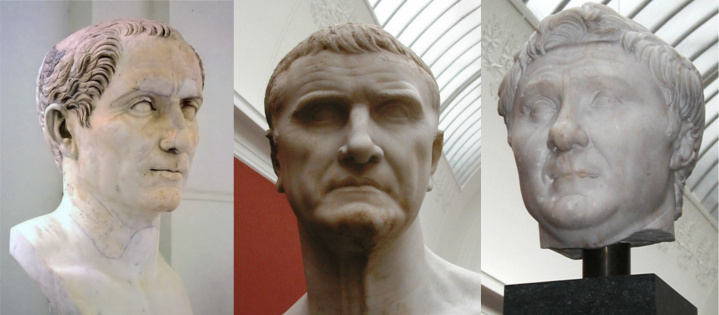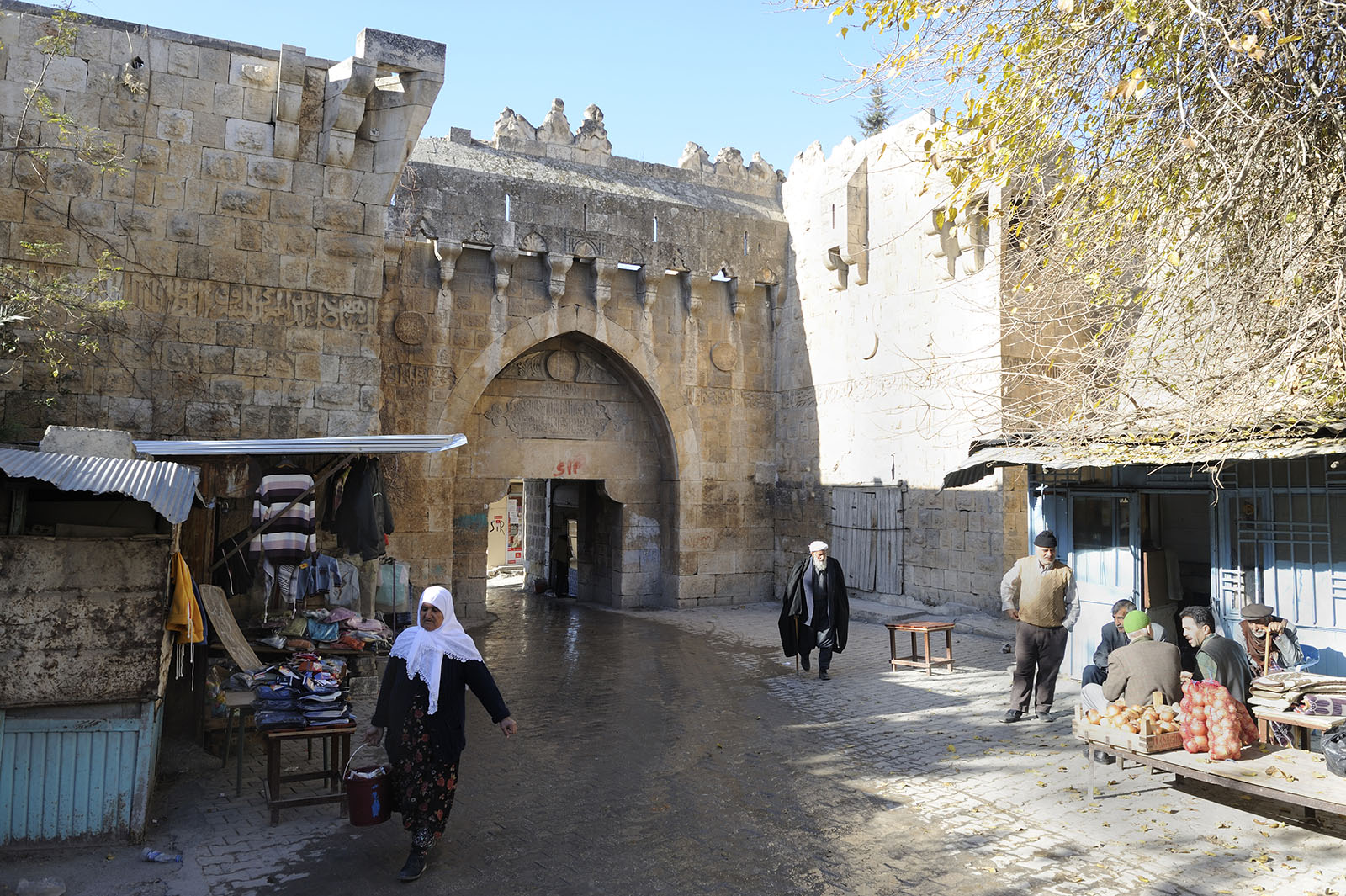|
Cyrrhestice
Cyrrhestica ( el, Κυρρηστική) is a district of Greater Syria which appears to have owed its name to the Macedonian occupation of the country. It lies to the east of the plain of Antioch and Amanus, and was bounded on the east by the Euphrates and Commagene to the north, it extended as far as the desert. This fertile, well-watered, and thickly peopled district occupied the right bank of the Euphrates, where the river inclines rather eastward of south. It was the scene of the campaign in which Ventidius defeated the Parthian Pacorus and avenged Crassus and the Roman army which had fallen at Carrhae. Constantine I united it with Commagene under the name of Provincia Euphratensis. The chief towns of Cyrrhestica were Hierapolis Bambyce, Zeugma, Europus, Birtha?, Beroea (modern Aleppo), Batnae, and Cyrrhus.Carl Ritter Carl Ritter (August 7, 1779September 28, 1859) was a German geographer. Along with Alexander von Humboldt, he is considered one of the founders of modern ... [...More Info...] [...Related Items...] OR: [Wikipedia] [Google] [Baidu] |
Provincia Euphratensis
Euphratensis (Latin for " Euphratean"; grc-gre, Εὑφρατησία, ''Euphratēsía''), fully Augusta Euphratensis, was a late Roman and then Byzantine province in Syrian region, part of the Byzantine Diocese of the East. History Sometime between 330 and 350 AD (likely ), the Roman province of ''Euphratensis'' was created out of the territory of Coele Syria along the western bank of the Euphrates. It included the territories of Commagene and Cyrrhestice. Its capital was CyrrusEdmund Spenser Bouchier, ''Syria as a Roman Province'', 1916p. 155/ref> or perhaps Hierapolis Bambyce. It remained within the Byzantine Empire following the 395 division of the empire by Theodosius I. The province is listed in the Laterculus Veronensis from around 314. The Roman Catholic and Orthodox saints Sergius and Bacchus were supposedly martyred in the city of Resafa in Euphratensis, and the city was later renamed Sergiopolis. Other cities in the province were Samosata Samsat ( ku, Samîsad), ... [...More Info...] [...Related Items...] OR: [Wikipedia] [Google] [Baidu] |
Crassus
Marcus Licinius Crassus (; 115 – 53 BC) was a Roman general and statesman who played a key role in the transformation of the Roman Republic into the Roman Empire. He is often called "the richest man in Rome." Wallechinsky, David & Wallace, Irving.Richest People in History Ancient Roman Crassus. Trivia-Library. ''The People's Almanac''. 1975–1981. Web. 23 December 2009."Often named as the richest man ever, a more accurate conversion of sesterce would put his modern figure between $200 million and $20 billion." Peter L. BernsteinThe 20 Richest People Of All Time/ref> Crassus began his public career as a military commander under Lucius Cornelius Sulla Lucius Cornelius Sulla Felix (; 138–78 BC), commonly known as Sulla, was a Roman general and statesman. He won the first large-scale civil war in Roman history and became the first man of the Republic to seize power through force. Sulla ha ... during his Sulla's civil war, civil war. Following Sulla's assumpt ... [...More Info...] [...Related Items...] OR: [Wikipedia] [Google] [Baidu] |
Cyrrhus
Cyrrhus (; el, Κύρρος ''Kyrrhos'') is a city in ancient Syria founded by Seleucus Nicator, one of Alexander the Great's generals. Other names for the city include Coricium, Corice, Hagioupolis, Nebi Huri ( ar, نبي هوري), and Khoros (حوروس ''Ḳūrus''). A false etymology of the sixth century connects it to Cyrus, king of Persia due to the resemblance of the names. The former Roman/Byzantine (arch)bishopric is now a double Catholic titular see. Location Its ruins are located in northern Syria, near the Turkish border. It lies about 70 km northwest of Aleppo and 24 km west of Killis, in Turkey. Cyrrhus was the capital of the extensive district of Cyrrhestica, between the plain of Antioch and Commagene. The site of the city is marked by the ruins at Khoros, 20 km from Azaz, Syria, standing near the Afrin Marsyas River, a tributary of the Orontes, which had been banked up by Bishop Theodoret. History The Cyrrhus in Syria was founded by Sele ... [...More Info...] [...Related Items...] OR: [Wikipedia] [Google] [Baidu] |
Suruç
Suruç (, ku, Pirsûs, script=Latn, ''Sruḡ'') is a rural district and city of Şanlıurfa Province of Turkey, on a plain near the Syria–Turkey border, Syrian border southwest of the city of Urfa. History In antiquity the Sumerians built a settlement in the area. The city was a centre of silk-making. They were succeeded by a number of other Mesopotamian civilisations. The Roman Emperor Constantine I brought the town under the control of the city of Edessa, Mesopotamia, Edessa (modern-day Şanlıurfa). One of the most famous residents of the district is its 6th-century Syriac Christianity, Syriac bishop and poet-theology, theologian Jacob of Serugh. The Catholic Church, Roman Catholic Church hold the bishopric as a titular see of that church, though they had little presence in the area, while the Syriac church holds a separate Bishopric in the town. Tell-Batnan was visited by Roman Emperor, emperor Julian on his march from Antioch to the Euphrates in 363. The town was surre ... [...More Info...] [...Related Items...] OR: [Wikipedia] [Google] [Baidu] |
Aleppo
)), is an adjective which means "white-colored mixed with black". , motto = , image_map = , mapsize = , map_caption = , image_map1 = , mapsize1 = , map_caption1 = , pushpin_map = Syria#Mediterranean east#Asia#Syria Aleppo , pushpin_label_position = left , pushpin_relief = yes , pushpin_mapsize = , pushpin_map_caption = Location of Aleppo in Syria , coordinates = , subdivision_type = Country , subdivision_name = , subdivision_type1 = Governorate , subdivision_type2 = District , subdivision_type3 = Subdistrict , subdivision_name1 = Aleppo Governorate , subdivision_name2 = Mount Simeon (Jabal Semaan) , subdivision_name3 = Mount Simeon ( ... [...More Info...] [...Related Items...] OR: [Wikipedia] [Google] [Baidu] |
Birecik
Birecik; ku, Bêrecûk is a town and district of Şanlıurfa Province of Turkey, on the Euphrates. Built on a limestone cliff 400 ft. high on the left/east bank of the Euphrates, "at the upper part of a reach of that river, which runs nearly north-south, and just below a sharp bend in the stream, where it follows that course after coming from a long reach flowing more from the west". Etymology The historical name of the town, ''al-Bīra'' in Arabic and ''Bīreh'' in Syriac, derives from the Aramaic ''Bīrthā'', meaning fortress. It later evolved to ''Birecik'' with the addition of the Turkish diminutive suffix, ''cik''. It is called ''Belejik'' amongst the local population. Archaeology Birecik Dam Cemetery is an Early Bronze Age cemetery near Birecik. It was used extensively for about 500 years at the beginning of the third millennium BC. More than 300 graves were excavated here in 1997 and 1998. The site was discovered during the building of the Birecik Dam as part of the ... [...More Info...] [...Related Items...] OR: [Wikipedia] [Google] [Baidu] |
Carchemish
Carchemish ( Turkish: ''Karkamış''; or ), also spelled Karkemish ( hit, ; Hieroglyphic Luwian: , /; Akkadian: ; Egyptian: ; Hebrew: ) was an important ancient capital in the northern part of the region of Syria. At times during its history the city was independent, but it was also part of the Mitanni, Hittite and Neo-Assyrian Empires. Today it is on the frontier between Turkey and Syria. It was the location of an important battle, about 605 BC, between the Babylonians and Egyptians, mentioned in the Bible (Jer. 46:2). Modern neighbouring cities are Karkamış in Turkey and Jarabulus in Syria (also Djerablus, Jerablus, Jarablos, Jarâblos); the original form of the modern toponym seems to have been Djerabis or Jerabis, likely derived from Europos, the ancient name of the Hellenistic-Roman settlement. Geography of the site Carchemish is now an extensive set of ruins (90 hectares, of which 55 lie in Turkey and 35 in Syria), located on the West bank of Euphrates Riv ... [...More Info...] [...Related Items...] OR: [Wikipedia] [Google] [Baidu] |
Zeugma, Commagene
Zeugma ( grc-gre, Ζεῦγμα; syr, ܙܘܓܡܐ) was an ancient Hellenistic era Greek and then Roman city of Commagene; located in modern Gaziantep Province, Turkey. It was named for the bridge of boats, or , that crossed the Euphrates at that location. Zeugma Mosaic Museum contains mosaics from the site, and is one of the largest mosaic museums in the world. History Zeugma was founded in the early 3rd century BC as the city of Seleucia by Seleucus I Nicator, a Diadochus (successor) to Alexander the Great and Hellenistic Greek founder of the Seleucid Kingdom, on the site where he had the first bridge over the Euphrates built. In 64 BC, the Roman Republic gained control of the city. Zeugma was of great importance to the Roman Empire as it was located at a strategically important place. Up to 70,000 people lived in the city, and it became a center for the military and commerce for the ancient Romans. In 253 AD, it was destroyed by the Sassanids, but was later rebuilt. In late a ... [...More Info...] [...Related Items...] OR: [Wikipedia] [Google] [Baidu] |
Hierapolis Bambyce
Manbij ( ar, مَنْبِج, Manbiǧ, ku, مەنبج, Minbic, tr, Münbiç, Menbic, or Menbiç) is a city in the northeast of Aleppo Governorate in northern Syria, 30 kilometers (19 mi) west of the Euphrates. In the 2004 census by the Central Bureau of Statistics (CBS), Manbij had a population of nearly 100,000.General Census of Population and Housing 2004 . Syria Central Bureau of Statistics (CBS). Aleppo Governorate. The population of Manbij is largely , with |
Constantine I
Constantine I ( , ; la, Flavius Valerius Constantinus, ; ; 27 February 22 May 337), also known as Constantine the Great, was Roman emperor from AD 306 to 337, the first one to convert to Christianity. Born in Naissus, Dacia Mediterranea (now Niš, Serbia), he was the son of Flavius Constantius, a Roman army officer of Illyrian origin who had been one of the four rulers of the Tetrarchy. His mother, Helena, was a Greek Christian of low birth. Later canonized as a saint, she is traditionally attributed with the conversion of her son. Constantine served with distinction under the Roman emperors Diocletian and Galerius. He began his career by campaigning in the eastern provinces (against the Persians) before being recalled in the west (in AD 305) to fight alongside his father in Britain. After his father's death in 306, Constantine became emperor. He was acclaimed by his army at Eboracum (York, England), and eventually emerged victorious in the civil wars against emperors ... [...More Info...] [...Related Items...] OR: [Wikipedia] [Google] [Baidu] |






